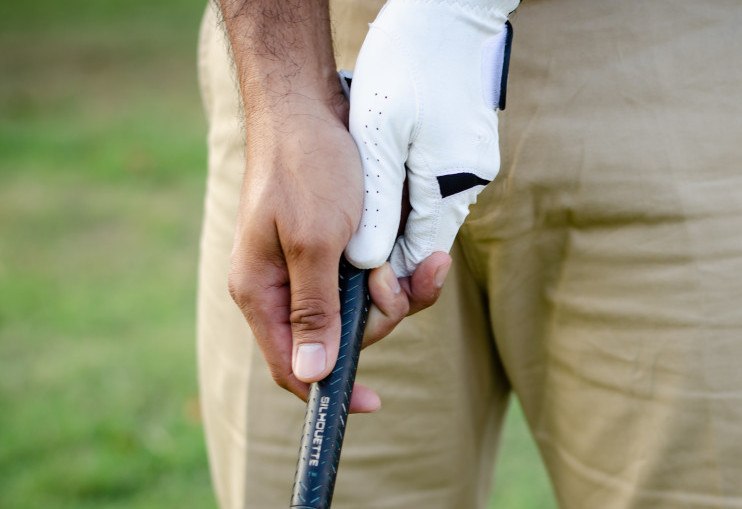The USGA and the R and A have just released a proposal for various rule changes that they would like to implement from 2019. While some are seeing these ideas as a triumph for common sense, they have also been criticized for changing the way the game is going to be played by some or not changing it enough from others!
If you are a bit confused as to what the fuss is really all about, don’t worry. Here are the main proposals as well as my take on what is really going on. If you have any reaction to the new rules or ideas for other rule changes, I would love to hear from you so please feel free to drop a comment in the box below.
Of course, you might just be wondering why it is necessary to change the rules at all. After all, golf has always been about ‘playing it as you find it’ right? Of course, it really isn’t that simple and in all honesty, there can’t be many people who actually understand the rules completely. Making things simpler has actually become a necessity and this idea is the basis of the proposed reforms.
What I find especially interesting is that both governing bodies are actually asking golfers to give their feedback. Over the next six months, they want to hear from you and me with our thoughts. What a perfect opportunity for golfers to actually shape our own game rather than suffering through badly thought-out diktats.
The new rulebook will reduce the 34 current rules to 24 and actually include over 100 changes to the current version. Many of these are fairly minor and I have included only those that are likely to have a major impact for most golfers.
[toc]
Personally, I find these changes to be a step in the right direction for the game. Golf shouldn’t be complicated, it needs to be faster, simpler and fairer. This is a step in that direction. So lets take a look at exactly what these changes will involve.
On The Green

[thrive_text_block color=”blue” headline=””]Accidentally moving either ball or ball-marker will no longer incur a one shot penalty. Also, if the ball moves for whatever reason (or even for an unknown reason) after you have lifted and replaced, simply put it back in its original spot. [/thrive_text_block]
This must be good news. Nobody wants to see players constantly backing off their putts on windy days.
[thrive_text_block color=”blue” headline=””] You can repair any damage to the putting green, not simply pitch marks. This includes animal damage and especially spike marks.[/thrive_text_block]
This is one that is great for pros and amateurs alike. for the pros, especially those in the hunt come Sunday afternoon, greens can get really beaten up. It doesn’t seem fair that a title and possible millions depend on someone else’s spike mark.
For those of us playing on the average course, it seems fair that we can repair the damage done by other golfers especially. In fact, I would guess most golfers do this anyone outside of competition.
[thrive_text_block color=”blue” headline=””]You can touch the line of your put as long as you don’t “improve the conditions for your stroke” This would previously have lead to either a two stroke penalty or the loss of the hole in matchplay. ([/thrive_text_block]
I am not so sure about this one. I think that the previous rule on repairing damage covers everything that needs to be said. I personally don’t like the idea of touching something to indicate a line. There is always the danger of someone pushing the grass flat (which isn’t the same as repairing damage) and[thrive_text_block color=”blue” headline=””] [/thrive_text_block] even though I am a terrible putter, I appreciate the challenge of reading greens without this.
[thrive_text_block color=”blue” headline=””] The flagstick can be left unattended (in the hole) and there is no longer a penalty (2 shots or loss of hole) if the ball strikes it. [/thrive_text_block]
This is great move in my opinion. It is going to speed things up but when you think about it, it will actually avoid a few problems too. No need to worry about walking on the line of someone’s putt as you get the flag, for example. Many golfers hole out without removing the flag in friendly games and now you can do the same in competition too.
Hazards
[thrive_text_block color=”blue” headline=””]’Water hazards’ will become ‘penalty areas’ along with other areas such as desert, rock, thick undergrowth etc and marked with red and yellow stakes. Taking relief will incur a one stroke penalty. Currently, relief is only available from water hazards. [/thrive_text_block]
Not really sure how this is going to pan out to be honest. Many course do have local rules which deal with penalty areas and drop zones, so this might not affect all golfers equally. There was a demand from some of the golfing population to make out of bounds into a lateral hazard and allow a penalty drop rather than going back to the tee to reload.
While I would probably benefit from this give my tendency to spray it all over the place off the tee, I can see why the USGA and the R and A resisted. However, courses are now allowed to mark penalty areas as red and allow lateral relief so this might open to the door to dropping in areas that were previously out of bounds.
[thrive_text_block color=”blue” headline=””] lose impediments can be moved inside penalty areas and the club may be grounded.[/thrive_text_block]
This is sure to be controversial, given that some golfers are going to use the grounded club rule to improve lies. My thoughts on this are that these golfers are the same ones using ‘the foot wedge’ to knock it out of the rough and forget that whiff in the trees. Life is too short to spend time monitoring everyone on the course. People who do this stuff generally find themselves short of playing partners fairly soon anyway.
Bunkers

[thrive_text_block color=”blue” headline=””] lose impediments can be moved inside the bunker and the club may be grounded. However,it is still forbidden to take a practice swing that touches the sand, to use hand or club to test the sand or to ground the club directly behind or in front of the ball. currently, doing any of the above leads to a two-shot penalty or the loss of the hole[/thrive_text_block]
This one is causing some heated debate on the internet forums and it is easy to see why! Bunkers are seen very differently by good golfers and hackers. For a low handicapper, they would often rather be in the sand than in the rough, especially if the course is good and the bunkers are full of the sort of fine sand you see on tv.
For the higher handicapper, bunkers might mean adding 2-3 shots to the score straight away. Depending on whether you are in one group or the other, your position on this is going to vary. I think a lot of people are asking what really constitutes ‘testing the sand’ and I can see this one causing a few heated debates on the course when money or pride is on the line.
Ball at Rest
[thrive_text_block color=”blue” headline=””]You are only considered responsible for your ball moving if it is virtually certain (95%) that you were the cause. Currently, if you are likely (50% chance) of being responsible, you are penalized. If you move your ball while searching for it, you don’t receive a penalty. [/thrive_text_block]
The percentages make this a little more complicated than it needs to be in my opinion. However, this must be a good change. Nobody like seeing a golfer penalized for something that is probably not their fault. Likewise for the ball-hunting part. If you are looking for your ball in thick rough or undergrowth, it is virtually imposible to search effectively without risking moving the ball.
Moving Ball
[thrive_text_block color=”blue” headline=””]If, after striking the ball, it accidentally hits another player, a piece of equipment (bag or club, for example)or caddie there is no penalty (currently 1-2 shots, depending on circumstance.) Simply play the ball as it lies. Deliberately using equipment in this way is still forbidden. [/thrive_text_block]
This just seems like common sense. Nobody (I hope!) is trying to deliberately hit another player, or their trolley. It always seemed harsh to be penalized as well as having to deal with the results of a poor shot AND possibly trying to replace the ball, guessing where is was/might have gone.
Taking a Drop
[thrive_text_block color=”blue” headline=””]The ball may be dropped in any way from any height, the only requirement being that it falls before coming to rest (so it can’t be placed.) Previously, the ball had to be dropped from shoulder height, usually with a straight arm. [/thrive_text_block]
Lots of golfers are going to be happy about this one, simply because it gives them a greater possibility to ‘control’ the drop. The obvious question is ‘how high?’ Dropping from shoulder height basically means that the ball could end up anywhere, especially if you are tall like me! However, what is to stop someone from dropping the ball only an inch or two? This sounds a lot like placing to me. Allied to this, the dropping zone will actually be somewhat larger, with an area from 20-80 inches rather than a line. Is this the end of terrible lies after a drop? We’ll see.
Lost Ball

[thrive_text_block color=”blue” headline=””] The ball is lost if not found within three minutes (compared to five minutes currently)[/thrive_text_block]
The obvious aim here is to speed up play, but it is worth thinking about the effect this will have on the average golfer. For pros, there are ball spotters out there and it is rare to see a lost ball. Even if it does end up in thick rough, the spectators mean that if it can be found, three minutes is plenty of time.
This isn’t true of the average amateur and there will be a greater number of lost balls for sure. Golfers better get into the habit of hitting provisionals more often (which is time-consuming in itself) to avoid going back to the tee and reloading. I am not convinced that this will be a time-saver and could actually cause a bit of frustration on the course.
Taking Relief
[thrive_text_block color=”blue” headline=””] The ball may be changed when taking relief. [/thrive_text_block]
Today you need to play the same ball from tee to green apart from a couple of exceptions. Under the proposed changes, you will be able to substitute the ball when taking relief. I’m guessing that this is because the ball may me slightly damaged by finishing in whatever hazard/area you need to take relief from!
This doesn’t seem to be a huge problem for me. It isn’t saying that you can change ball whenever (which would mean people hitting a distance ball off the tee and then a soft, high spin one into greens for example.)
Note that this change is for free relief because it has always been possible to change when taking a penalty.
[thrive_text_block color=”blue” headline=””] Your best guess as to a distance, line or point of entry cannot later be overruled (by video for example) as long as reasonable judgement is used. [/thrive_text_block]
Again, this seems like plain good sense. Although it isn’t generally going to apply to most of us, the ruling bodies are probably fed up of viewers phoning in after watching 25 slow motion replies to say that Tiger’s ball should have been placed three inches to the left or whatever!
Measuring Distance
[thrive_text_block color=”blue” headline=””]A distance-measuring device (gps or rangefinder) can be used unless forbidden by a local rule.[/thrive_text_block]
This is simply tuning the current situation around. Today, a local rule has to specify that a distance-measuring device can be used. fighting against this technology seems to be somewhat inevitable and they are being used in a couple of professional tournaments this year.
This is clearly controversial between those who see it as cheating and others who think that the detailed yardages books and prep work done by the caddies mean that it is no real advantage, but will lead to faster play. The idea of ‘ready golf’ is clearly a priority.
in my opinion, for most golfers this is a good thing. for us, the issue is less about knowing the distance as being able to actually hit it anyway!
Caddies
[thrive_text_block color=”blue” headline=””] The caddie can’t stand behind the player from the moment they take their stance [/thrive_text_block]
It is fairly common practice (especially on the LPGA) to see the caddie taking a very active role in lining up putts, only moving away just as the player is about to strike the ball. Now he will be obliged to move away beforehand.
For most of us, this isn’t an issue, but it looks like an effort to place more emphasis on the player. Will this really make a difference?
[thrive_text_block color=”blue” headline=””] The caddie may lift and replace the ball without permission (currently this is a one shot penalty) [/thrive_text_block]
Although this isn’t really a big issue, I do wonder if we will see caddies/players using more markings/lines on the ball with the caddie placing the mark in such a way as to give the line to the player (given they can’t stand behind the ball.)
I have visions of the caddies who are great green readers (and maybe those working with the ‘weaker’ putters on tour) lining up the putt and giving some sort of speed indication based on the chosen line. “Ok Phil, hit it on the line I’ve chosen at a 7”
Score
[thrive_text_block color=”blue” headline=””] A capped score per hole can be set by the committee even in stroke play [/thrive_text_block]
This is a particularly interesting one for me. In France, where I play much of my golf, most competitions outside of serious amateur events use Stableford. This obviously limits scores and also encourages a better pace of play. The other side of this coin is that many golfers don’t realise just how bad they are! Capping scores at double bogey is fine, but many (most?) average mid-handicappers have triples, quads or more every now and again.
I certainly agree with this effort to improve pace of play though. As an example, one of the holes on my course is a very short par three of around 300 yards. However, the tee shot involves hitting it at least 180 yards through a very narrow gap in trees over a large bank. Whilst this hole has its fair share of birdies, those who mess up their tee shot can hit double figures easily as they attempt to hack up the bank, avoiding trees, bushes and out of bounds. If they could pick up , this would speed things up and probably improve the golfer’s day.
However, it would also give a somewhat false vision of the round. Which side of the fence is the right one here?
Ready Golf
[thrive_text_block color=”blue” headline=””]Players are encouraged to play ready golf. This means playing out of turn when it would speed up play and taking less than 40 seconds on a shot [/thrive_text_block]
While this new rules say that in matchplay an opponent may ask you to replay a shot (which seems perfectly normal), in all other circumstances, players should be ready to play and take their shot even if it isn’t their turn (ie they aren’t farthest from the hole)
This must be good news. How many times have you waited for someone who needed a little more time to play (difficult lie, drop or whatever?) Now the other player(s) can hit while the first player prepares. This should certainly speed things up.
Committees have also been given the option of creating their own rules for ‘breach of etiquette’ rather than the simple option of disqualification or not. Hopefully this should give clubs the possibility to experiment with local rules in order to make the game fluid and easier for everyone.
Conclusion
It is important to remember that these rules are not currently in play and are almost certainly going to change depending on feedback over the next months. However, the underlying trend to simplify and speed up the game is clear and in my opinion, a positive sign for the future of the game.





